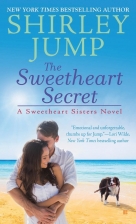Copyright 2001 by Shirley Jump
www.shirleyjump.com
Good fiction and non-fiction does two things makes you keep turning long into the night and triggers your emotions. It’s the books that make us laugh and makes us cry that we remember, which is why writing with emotion is so important.
If I find a book that does that well, I recommend it all over the place. My daughter is now reading many of the stories I loved as a child Algonquin, Misty, Black Beauty, Kim. They were stories that grabbed me emotionally, staying with me long after the book was done, in fact, decades after the book was done.
As an adult, there are authors who have that special talent to move me emotionally. For humor, it’s Janet Evanovich and Jenny Crusie. For tears, I love Patricia Gaffney, LaVyrle Spencer, Kat Martin and so many others. Those books become the ones I refuse to part with and in fact, I won’t even loan my copies out.
Those authors are masters at writing emotion. They wring every last drop out of the piece, giving the readers more than they bargained for when they plunked down $5.00 or so for a book.
Writing with emotion is one of the hardest lessons to learn, especially if you have a background like mine. I started in newspapersreporting on Town Meetings, car accidents and finance committee doings. No emotion there and in fact, none allowed. Just the facts, ma’am, as the saying goes.
When I started writing fiction, I had to teach myself to imbue the work with emotion. The first few manuscripts were flat, nearly devoid of feeling. Sort of like reading really long newspaper articles. Then I did several things, all of which brought more emotion into the work:
1. I read constantly and analyzed every book that moved me. I would highlight passages I liked and take notes on what was so good about them. In some books, it was the beauty of the language (as in White Oleander); in others, it was the sacrifice a character made (think Tale of Two Cities) and in others, it was the way the story touched on the things that mattered most to me, like Kristin Hannah’s Distant Shores.
2. I did the same with movies. How does Nora Ephron convey sadness in Sleepless in Seattle? Movies are wonderful for analysis because the director doesn’t have the crutch of introspection to rely on. You can literally hear the loneliness in Tom Hank’s voice when he talks about his late wife. Your heart is about ready to break when he talks about the magic they shared and how hard it is for him to simply breathe.
3. I sat down and figured out what made me cry. Now, I already knew AT&T commercials could get me weepy, but why? What was it in those commercials that I specifically related to? The answer was family. I’m a sucker for true love, family reunions and stories with children.
4. I worked those elements into my own fiction. I knew family, children and sacrifice worked as emotional triggers for me, so I used those elements in my novels (The Virgin’s Proposal has all three elements).
5. It isn’t enough to just throw in a baby or a sick dog and hope everyone gets tears in their eyes. You have to make those things matter to the character for deep, fundamental reasons we all can relate to. Find out WHY your character cares and what would happen if he lost what means most to him and you have an emotional trigger.
6. Realize also that most writers are afraid to write with emotion. Why? Because nine times out of ten, it means writing from the heart, pulling at those gut feelings that we’d rather not think about. The family member who died, the terrible taunting you received in high school, the fears of driving or getting locked in a closet. Writing is about digging deep into that personal well and pulling out all the stuff you don’t want to pull out, then using them with your characters. That doesn’t mean your work becomes autobiographical; it means you get in touch with the core of your emotions and use those to bring your characters and writing to life.
7. Work hard at the language, too. Word choice (as you’ll see in the humor section) is essential. Describe people with emotion the woman isn’t just thin, she’s a skeleton in a housedress, worn down by life. The man isn’t just sad, he’s walking with a hunch to his back that speaks of agonies piled on him like bricks.
Humor is, surprisingly, often as hard to write as sad parts. I learned a great deal about the importance of all the above elements, and the power of word choice when I did a rewrite that took the book from Good to Sold.
Here is the opening scene from the early version of THE VIRGIN’S PROPOSAL:
CHAPTER ONE
There could be worse things in life than standing on a street corner in a banana suit, but Katie doubted it. Dressed from head to toe in yellow felt, she found it hard to maintain any sense of dignity at all.
Of course, it had been her idea in the first place to use the costume as a unique marketing tool for the store. When she’d mentioned the idea to Sarah, her business partner, Katie hadn’t imagined she would be volunteering herself to hawk fruit baskets on the corner of Main and Washington Streets. She straightened the stand-up sign beside her advertising their sale on the gift arrangements.
“Hey Chiquita! Can you peel for me?” A carload of teenagers screamed past her, the entire group of youths laughing and pointing.
She bit back a retort, and mentally added it to the eleven other banana jokes she had heard in the single hour she’d been out here. Apparently, a five-foot-three, twenty-six-year-old woman in a banana suit was the funniest thing in the tiny town of Mercy today.
She could see why. A lifelong resident of Mercy, Indiana, population 9000, she knew firsthand that very little of interest happened in the town. The most exciting event was the annual 4-H fair every summer when local residents compared their cattle and pigs in competitions that occasionally got heated, with loud boastings and wild predictions about the entrants. Other than that, life in the small town was quiet and predictable.
Okay, I have a few jokes in there. Some humor. You know where she is and why she’s there; you know she’s embarrassed. Good stuff, but not selling stuff.
Here’s the new version. Note the reworked opening line, the increased humor and how one word could do the work of many.
CHAPTER ONE
Standing on a street corner in a banana suit was not the most humiliating thing to happen in Katie’s life, but it came in at a close second.
Dressed from head to toe in yellow felt, she barely remembered what the word dignity meant. She’d checked hers the minute Sarah had talked her into masquerading as a piece of fruit, all to increase sales.
“Hey Chiquita! Can you peel for me?” A carload of teenagers screamed past her. She might as well have been the Soak-the-Bloke clown for all the respect she’d received. Apparently, a five-foot-three, twenty-four- year-old woman in a banana suit was the funniest thing in the tiny town of Mercy, Indiana, today. What kind of suicidal tendencies had made her mention the idea of doing something unique to boost sales to Sarah, soon-to-be-ex-best friend and business partner?
The store. It was all she thought about. Sales had been low when they’d opened a year ago and kept dropping each month. The rent was due in two weeks, and unfortunately, their bank account didn’t have enough to cover it. Katie and Sarah had yet to find a way to crack the hold their competition, Flowers and More, a shop in the nearby city of Lawford, had on Mercy. Plenty of weddings, bar mitzvahs and funerals happened around here, but hardly anyone was buying from “A Pair of Posies”.
If there was some way to get people to notice the store, maybe Katie wouldn’t feel like such a failureboth personally and business-wise. She was desperate to make a go of the storedesperate enough to wear the fruit suit.
The four-tone Ford with the teens came swerving back. “You’d be King Kong’s dream!”
I did include a bit more from the new version, but only because it brings me to a couple of other points. Let me first take the word choices.
In the first version, I had: “Hey Chiquita! Can you peel for me?” A carload of teenagers screamed past her, the entire group of youths laughing and pointing.
In the second version, I deleted the second clause of that sentence. Why? Because “screamed past her” and “carload” implied the same thing. Plus, it’s funnier when it’s shorter. Then I added the “Soak-the-Bloke” comment. I did the same thing with the opening lines, tightening them until I felt they had the maximum humor impact.
Humor is about reaching further and harder for the right words. It’s saying “fruit suit” instead of “costume.” It’s also situations, but more often, humor works better with dialogue and language.
Another key don’t take the first thing that comes to mind. Try harder, strive for more. Try to be unique in your humor and not rely on something that others have done before. Unique humor makes for unique, memorable characters. They breathe on the page because they feel, they laugh…and they live.



















